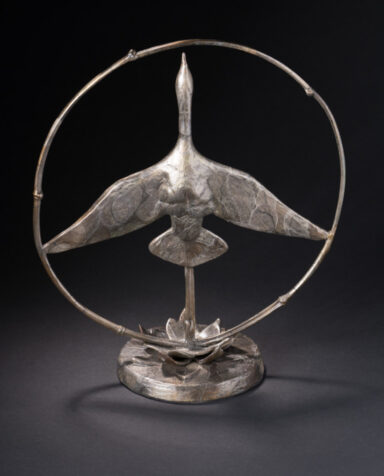Speech for Hiroshima Day Rally Darwin 6 August 2023
We are here today to remember the atrocities of war and to try and prevent such outrages from happening here – and again.
In this, I acknowledge the thousands of years that First Nations peoples here and elsewhere around the world have been subjected to dispossession and genocide by colonial settlers mainly interested in ripping up the land for minerals and creating the myth of terra nullius – uninhabited land to warrant this. As custodians of Country, Larrakia peoples have protected and bonded with this land of their ancestors and they pass this respect and love onto their children into the future. As a guest of the Larrakia peoples, I also respect their traditions, heritage and custodianship and try to live peacefully and sustainably with the land that I live in and love.
On the 78th anniversary of the U.S. dropping nuclear bombs on the Japanese cities of Hiroshima and Nagasaki, nationwide events and commemorations are being held across Australia.

On 6 and 9 of August 1945, in an unparalleled crime against humanity, America dropped nuclear bombs on Hiroshima and Nagasaki, unleashing the great scourge of nuclear weapons and obliterating the two cities and their people.
120, 000 people died instantly and another 100,000 died from long term radiation poisoning and injuries. Tens of thousands more lived with radiation sickness for the rest of their lives.
Animals also suffered, just as people did. The fish in the lake died. Like the bomb survivors who lost teeth and hair, they lost their scales and could not swim normally.
Leading up to the nuclear bombing of Hiroshima and Nagasaki, the first nuclear bomb test was in early 1945. Worldwide nuclear testing rose rapidly from then until it peaked in the 1970s. The Cold War between US and USSR/Russian -backed nations brought more testing in the early 1990s. When the Comprehensive Test Ban Treaty was signed in September 1996 and then ratified by major nuclear weapons powers, nuclear testing reduced significantly.
All in all, over 2,000 nuclear explosions have been conducted, in over a dozen different sites around the world.
South Pacific people and countries (including Australia) strove for many years to create and maintain a nuclear free zone in their region. Under AUKUS and the acquisition of hunter killer nuclear submarines, Australian governments are now betraying these hard won achievements by introducing the nuclear threat into the South Pacific, and risking a nuclear war in the region.
Before 1963, the United States and other countries conducted more than 500 nuclear weapons tests. Radioactive particles and gases were spread in the atmosphere. Depending on the size and type of weapon that was exploded, some of these particles and gases travelled great distances before falling to earth (called fallout) exposing all living things to the radiation.
Radioactive fallout was deposited all over the world, exposing many people to it. This fallout is still present in small amounts. Global fallout studies have found that people living in areas directly exposed to nuclear testing since 1951 are susceptible to radioactive fallout that affects their organs and tissues for a lifetime.
AUKUS and nuclear submarines will require Australia’s commitment to store large quantities of weapons-grade nuclear waste on the unceded lands of the First Nations People.
Today Sunday 6 August commemorations and events are being held around Australia to remind the people of the horrors of Hiroshima and Nagasaki and call for the Australian government to cancel AUKUS and nuclear submarines and stop the drive to war.
The present climate of building up US military might in our region and the proliferation of nuclear weapons makes it urgent for the Australian government to sign and ratify the UN Treaty on the Prohibition of Nuclear Weapons.
Hiroshima and Nagasaki are sobering reminders that the march to war must be stopped.
Never Again Hiroshima and Nagasaki!
by IPAN members in Melbourne, Sydney and Darwin
